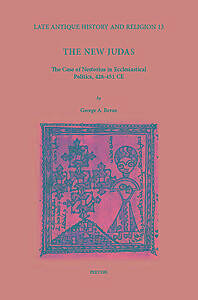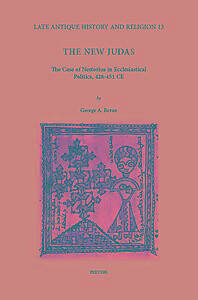
- Afhalen na 1 uur in een winkel met voorraad
- Gratis thuislevering in België vanaf € 30
- Ruim aanbod met 7 miljoen producten
- Afhalen na 1 uur in een winkel met voorraad
- Gratis thuislevering in België vanaf € 30
- Ruim aanbod met 7 miljoen producten
Zoeken
€ 87,00
+ 174 punten
Omschrijving
The New Judas is a new account of the life of Nestorius (c. 386-451 CE), the Christological controversy that engulfed him, as well as the critical imperial interventions into ecclesiastical politics during the period from the First Council of Ephesus to the Council of Chalcedon. This work endeavours to use both Nestorius' own Liber Heraclidis, preserved only in Syriac, as well as the unprecedented abundance of primary documents in Greek and Latin from Acta Conciliorum Oecumenicorum, to answer a question of fundamental historical importance: How could the teaching of Christ's two natures, one so closely identified with Nestorius, deposed in 431, be vindicated in all its essentials at the Council of Chalcedon in twenty years later? The answer requires not only a reconsideration of the role of the supposedly timid emperor Theodosius II, but also a new understanding of the evolving position of Nestorius' chief opponent, Cyril of Alexandria.
Specificaties
Betrokkenen
- Auteur(s):
- Uitgeverij:
Inhoud
- Aantal bladzijden:
- 386
- Taal:
- Engels
- Reeks:
- Reeksnummer:
- nr. 13
Eigenschappen
- Productcode (EAN):
- 9789042932593
- Verschijningsdatum:
- 17/10/2016
- Uitvoering:
- Hardcover
- Formaat:
- Genaaid
- Afmetingen:
- 168 mm x 246 mm
- Gewicht:
- 793 g

Alleen bij Standaard Boekhandel
+ 174 punten op je klantenkaart van Standaard Boekhandel
Beoordelingen
We publiceren alleen reviews die voldoen aan de voorwaarden voor reviews. Bekijk onze voorwaarden voor reviews.











